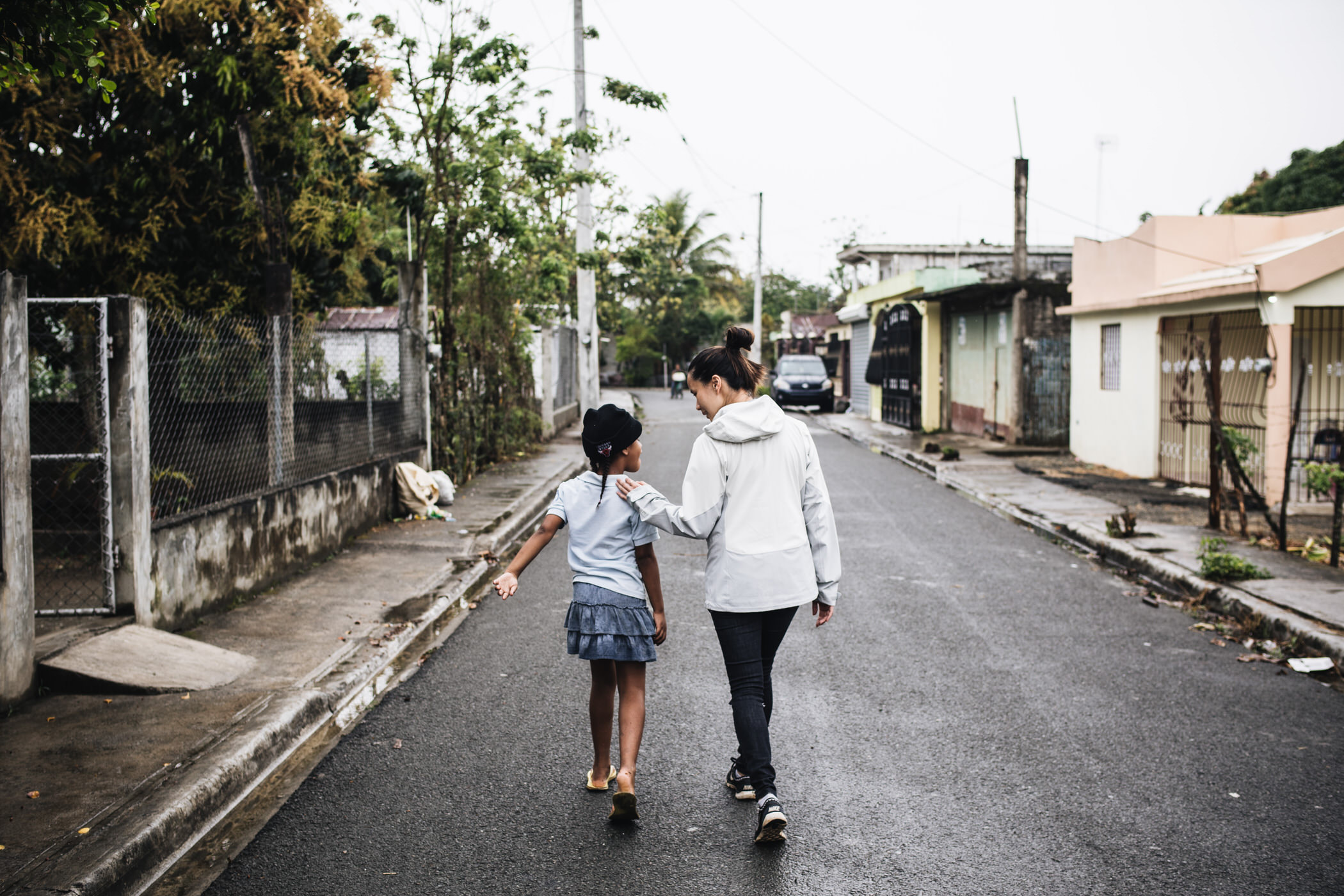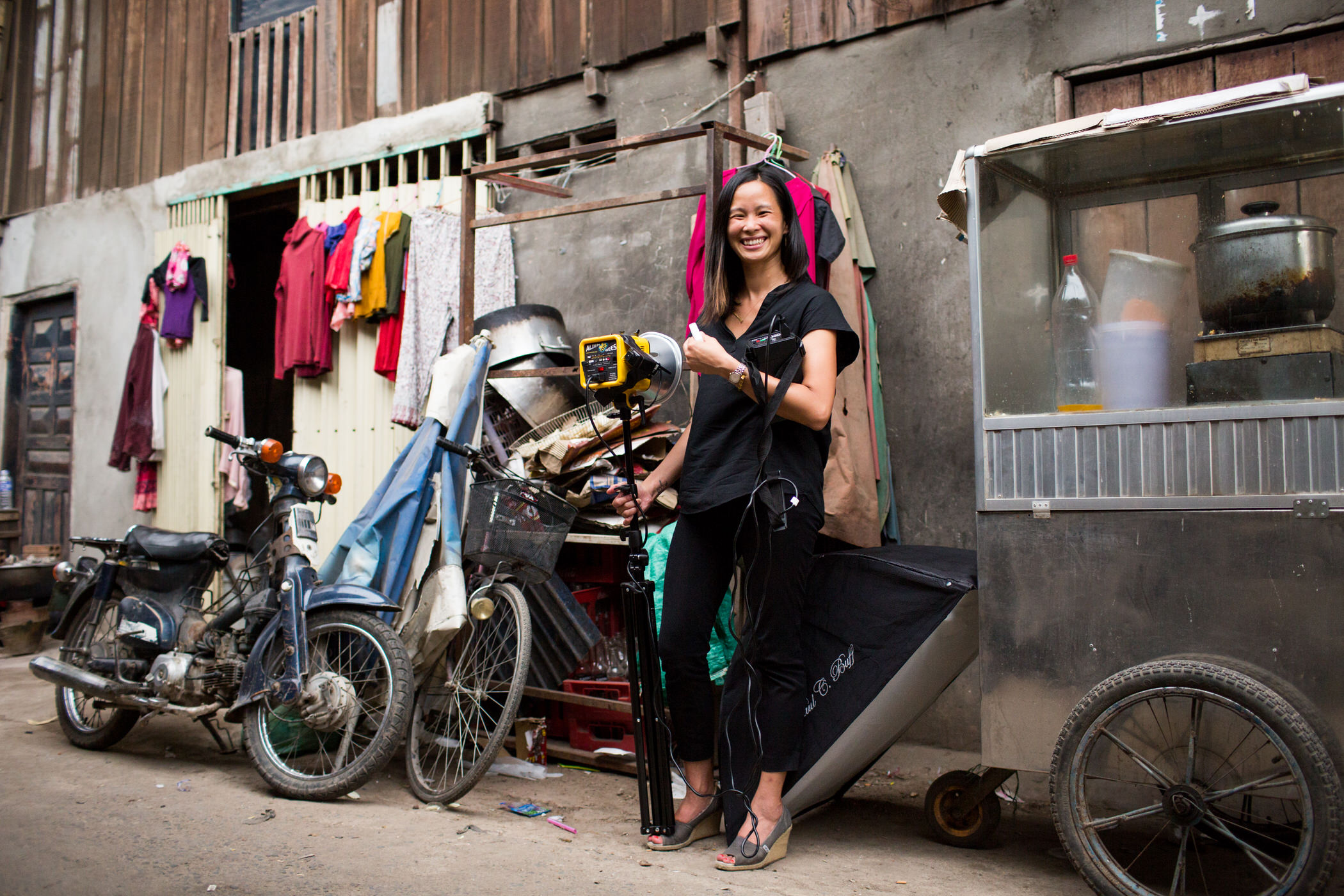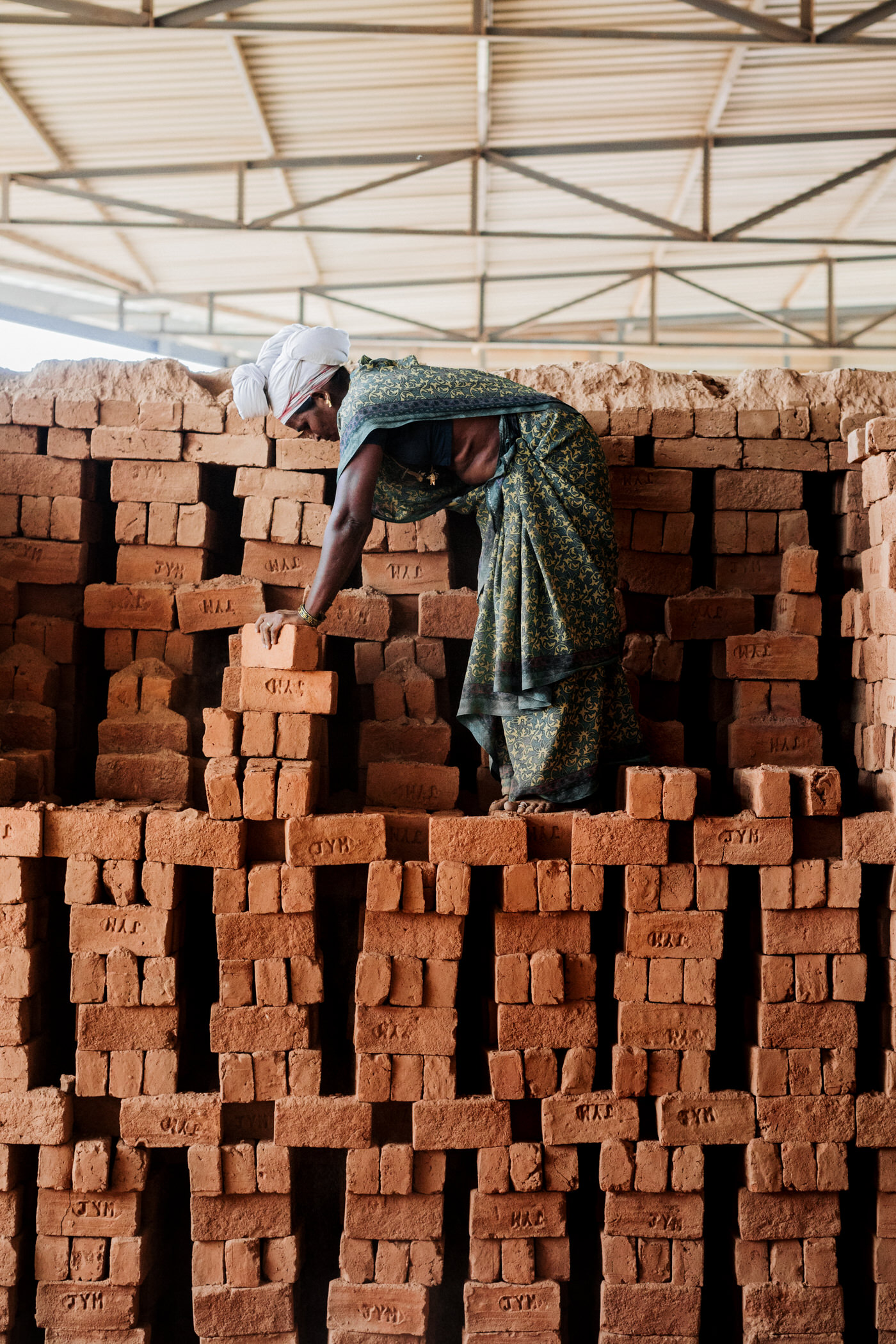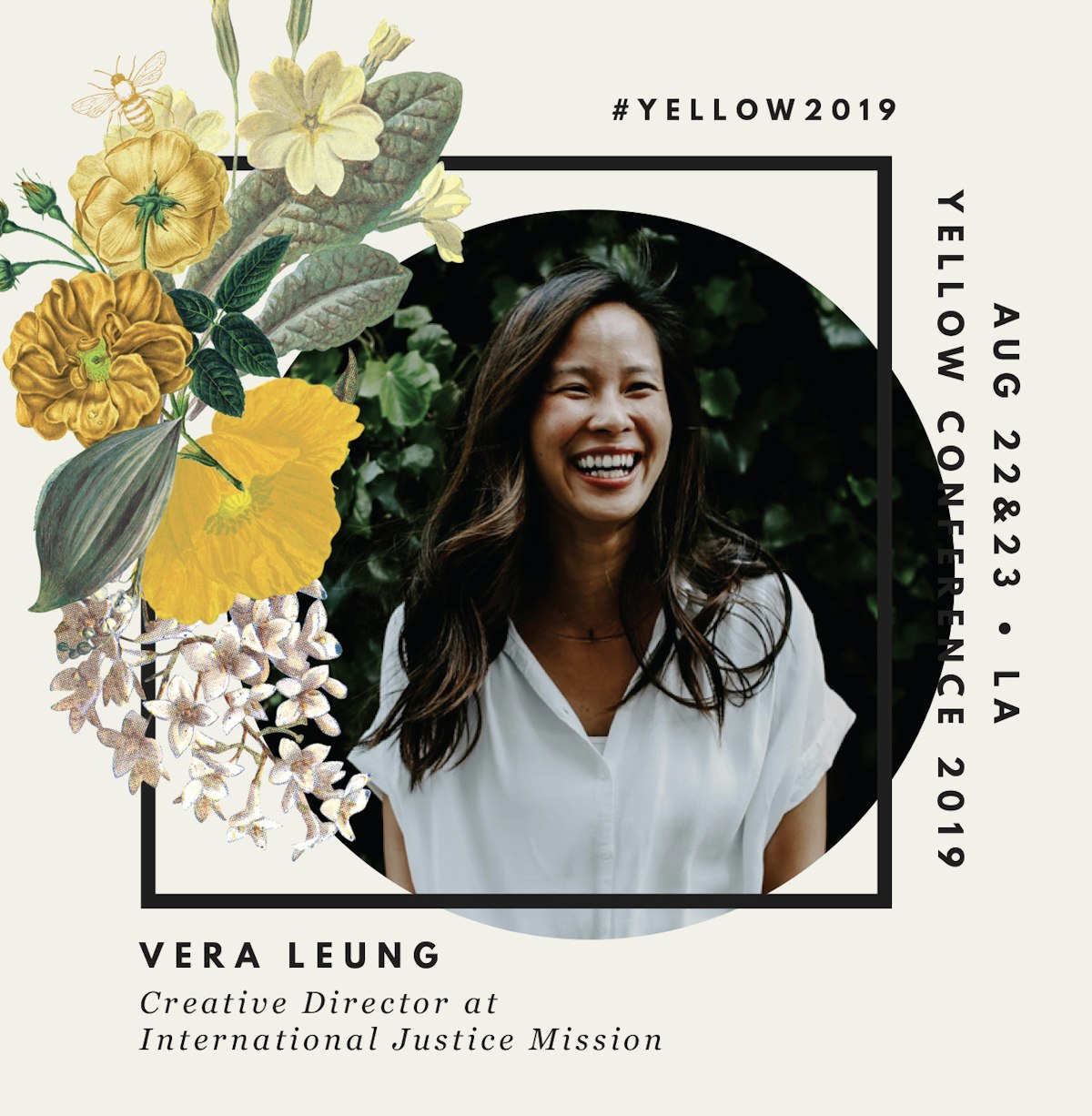It’s no secret that storytelling is essential to impactfully spreading the word about something, whether it’s a new film, a product, or a brand launch. But when it comes to the world of nonprofits who are tackling some of the most pressing global issues, how do you strike the balance of honoring the heavy realities of these crises, while engaging people to feel like they can take action? Today on the blog, we’re hearing from a woman who has a lot of experience doing just that. Meet Vera Leung, Creative Director at International Justice Mission, and a 2019 Yellow Conference speaker! Read our interview with Vera below to hear her about how she creatively problem-solves at IJM, her three tips for designers aspiring to be creative directors, and her hope for the future of IJM. (Or better yet, join us this month to hear her speak in person!)
Tell us a little bit about your background, and how it led you to work at IJM.
I studied Advertising at Boston University and began as a graphic designer in an ad agency working my way up, learning how the agency industry operates, and learning the tricks of Adobe.
I was always fascinated with how design and creativity could influence people to feel and do something.
I moved onto art directing a magazine at a university. These years helped me learn how imagery and design work together with words to tell good stories. I loved getting to meet and learn from extremely interesting, intelligent and bright people.
When I started at IJM nine years ago, I joined as the Senior Designer and our team was much smaller. Now I lead our Creative team in North America in developing the stories, campaigns, and experiences that will move people to end slavery. It’s neat to look back and see how all my prior experiences tie together to shape what I do now.

What does your day-to-day as a Creative Director for IJM look like?
At IJM, we spend thirty minutes beginning our day in what we call “stillness”. I like to use my time to meditate, listen to music, or read. The practice helps ground me and starts my day off with intention. Throughout the week, I’ll spend time with each team member working on our creative campaigns and stories and highlighting news or stories from the week of what our teams are doing in the field.
I’m always looking for what is the story we need to tell, how do we tell it in the best way, and how do we connect people to those stories.
My team is really creative and super fun to be around, so I try to soak in as much time with them as I can.

What are the main problems you have to solve creatively in your work? How do you tackle those?
One of the main challenges we have at IJM is that many people think slavery is something of the past. But in fact, today, there are millions of people trapped in slavery around the world. Another challenge is the belief that we can’t end it. But, we are more equipped today to end slavery in our lifetime. Amidst all of the important causes and issues today, how do we (IJM) break through and connect people to this urgent need?
My team tackles these challenges by telling a good story. At IJM, what we see and who we help makes for some of the world’s best stories. Each one is an epic, infused with urgency and hope. Our stories aim to draw people into the reality of those who are trapped in slavery and violence, and move as many people and resources as we can to rescue those who have been enslaved and restore them to lives of freedom.
What experiences have impacted your life in a profound way?
The gift of getting to know our survivors — their openness to me in sharing who they are, what makes them laugh, what their dreams are - is something I’ll always carry with me. Knowing the suffering they’ve already overcome and seeing where they’re headed is incredibly moving. The resilience, strength, and determination that they embody gives me great hope for our future and reminds me that in the midst of life’s challenges, there is light.

IJM truly does incredible work as the largest anti-slavery organization in the world. From a creative standpoint, how do you approach the storytelling and visuals for IJM to convey the heavy reality of the global issues IJM is working on with human trafficking in an approachable way for people to see that they can help make a difference alongside you?
My philosophy for stories at IJM is that story should draw you closer to others through connection, and honor what has been experienced and survived. Our stories should never turn you away in fear or disgust because of how we’ve depicted the suffering. Instead, it should enlighten you with truth and empower you to action.
When we tell a story, both our subject and our audience are the hero. They are both who I choose to honor in their story — in the giving of it and the receiving of it.
I look for the angles and elements where we can connect in our human experience of both the heavy and the light.
My hope is that we all are able to see that we can reach out to close the distance between us, and help each other with our resources, our time, our talent, and our influence. There are many ways to make a difference in this fight and it will take all of us.

This year our conference theme is Align – was there a “turning point” for you in which you took action to align your values with the work you do? What did that process look like? Did it come with any challenges?
I really value the honoring of people and their stories, especially when suffering and restoration is involved, and how that’s reflected in our work. As I stepped into leading a team and giving direction to others on creative work, I needed to learn how to align the way in which I honor the people whose stories we share with the way in which I honor the people who craft and create those stories. Our films, campaigns and designs can be compelling and achieve our goals, but if the people who poured their gifts and talents into making those films, campaigns, and designs were not honored in the process of creating, then we’ve missed something.
The challenges will always come when we interact with each other in the process of creating. There are miscommunications, there are differing opinions. Conflict comes with creating. The process isn’t always clean, but it can work if everyone is committed to holding each other in kindness and committed to the good work being done together.
What times of transition in your life have proved most important to get you where you are now?
Moving from one job to another has always been a turning point for me. When I came to DC for IJM, I left family, friends, and a city that I loved. While I didn’t know that I’d be where I am today with IJM, I was sure that it was the right next step at the time. I’ve been continuously learning it’s just about taking one step even if you don’t have all the information or know how it will work out.
Trust that you will experience and learn the things you need for who you are becoming.
There will be lessons and surprises in all the steps you take — right or wrong. They are all valuable parts of your story.

What three tips would you give to a designer who hopes to become a Creative Director in the future?
-
There’s no other you. Be confident and courageous in who you are and your unique point of view. Learn to communicate that vision in your work with a clarity and passion that inspires others.
-
Keep the creative challenge and your audience at the forefront. When your idea, design, or concept provides a solution that resonates with your audience, that’s when you’ve hit the mark.
-
Be kind in your feedback to other creatives. Your input and thoughts should build others up and be actionable.
What are you most looking forward to sharing with us at the Yellow Conference?
I’m looking forward to introducing you to an amazing little boy whose life and story has inspired and moved thousands to help end cybersex trafficking in the Philippines.

What do you most hope to see happen in the next year at IJM?
Pretty simply, I hope we get to see thousands of people freed from slavery and violence. I hope we get to see the joy of freedom on their faces. I hope massive support pours in from people like you, and from governments and institutions who will take action to end slavery and violence against women and children. Imagine a world where slavery no longer exists. At IJM, we believe it’s possible it can end in our lifetime.
Photos courtesy of IJM
